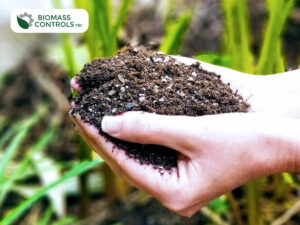Over the last couple of years, we have seen some incredibly high-level conversations regarding environmental sustainability and climate change, with novel ideas permeating different areas of society. One of the above biochar productions has been discussed extensively for its role in reducing carbon emission, enhancing soil fertility, and being a source of waste management. With increasing interest in biochar also comes the need for sophisticated production of biochar machinery and a forum for industry folks to meet and talk about their experiences. The conference on Biochar 2024 comes in this area to push the race.
This blog will take you through biochar production, review the state-of-the-art equipment for biochar production, and what to look at at the coming conference on Biochar 2025, whether you are an aspiring entrepreneur, researcher, or sustainability enthusiast in any other field. This blog will take an all-encompassing look at biochar and how you can change the agriculture-waste-management-climate action triad.

What is Biochar?
Before discussing the production of Biochar and equipment, you must understand what biochar is and why it has become a significant environmental solution. Biochar is charcoal produced through the thermochemical process of pyrolysis from biomass (wood, agricultural waste, municipal waste, even) in an oxygen-starved environment.
Biochar, a carbon-rich product derived from burning,is generallyy used as a soil amendment. However, it can also do cool things like filtering water and storing energy. The coolest part of biochar is how well it can store carbon for hundreds to thousands of years.
Biochar Production: Process and Its Advantages
Pyrolysis is burning organic materials (such as agricultural residues, forest waste, or biomass) at high temperatures (around 300-700°C) in an environment with low oxygen availability. This process converts the organic material into pyroligneous biochar (a solid carbon-rich substance) and bio-oil/syngas (which can be converted to combustible fuel).
- Pyrolysis Process
The pyrolysis process comprises the following phases:
- Heating: Feedstock is heated under anaerobic (air-starved) conditions. This process drives out gasses. Hence, the carbon is reduced; the remaining is biochar, a carbon source.
- Cooling and collection: The biochar is then cooled and stored. Producers should allow producers to modify the biochar’s properties, such as porosity, surface area, and carbon concentration, through temperature control and conditions.
- Zero-waste: the gases and oils generated in the pyrolysis are usually caught. They could be converted as a fuel source for producing uses (electricity/housing), making it an energy-positive biochar production process.
What Are the Environmental Advantages of Biochar?
- Carbon Sequestration: Biochar is capable of sequestering carbon over a long period. Many organic materials decompose naturally, with significant carbon returning to the atmosphere. However, when biomass is converted to biochar, the carbon is stabilized as an atmosphere-bound nutrient, and less CO2 is released!
- Soil Enhancement: Biochar is a soil fitness enhancer that increases soil water-holding capacity audience, making it less needy to be fitted with synthetic fertilizers. It also improves soil structure and can even increase crop yields, exceptionally preserved ones.
- Waste Management: In fact, biochar production is an alternative for disposing of agricultural waste, forest residues, and municipal waste. Biochar can provide environmental and economic benefits by converting (instead of burning or landfilling) the previously mentioned materials.
Biochar Production Machinery: For Maximum output in an efficient way
The demand for biochar is going up, and together with that, there is a need for high-grade and efficient biochar production equipment. Whether starting up a modest operation or preparing to scale for industrial production, good equipment is necessary to ensure the best performance, cost-efficiency, and environmental sustainability.
- Wide Variety: Several pieces of equipment are used for biochar production. The technical range of equipment involved in biochar production is broad, ranging from precision milling to the scale of production.
- Batch Pyrolysis: This is for newbies in producing Biochar or anyone doing smaller-scale operations. Small-scale kilns can be a good starting point. They are simple and inexpensive, albeit less efficient than larger thermally controlled systems.
- Pyrolysis systems: Direct biomass can be continuously fed into the reactor, which is pyrolyzed to produce biochar, syngas, and/or bio-oil. These systems allow for high productivity and fast processing of large-scale production.
Conclusion
Biochar is well positioned to become a global central pillar of sustainability initiatives, with capabilities in soil improvements, climate change reduction, and waste management. No matter whether you’re interested in biochar production, intending to acquire new biochar production plants, or looking out for the next Biochar Conference 2024. That’s the view of the biochar industry.
Biochar enters into much more existence with its challenges to the environment. The coming conference in 2024 on Biochar production will undoubtedly be full of knowledge, innovation, and collaboration to take biochar from its current achievements for the benefit of our world.
